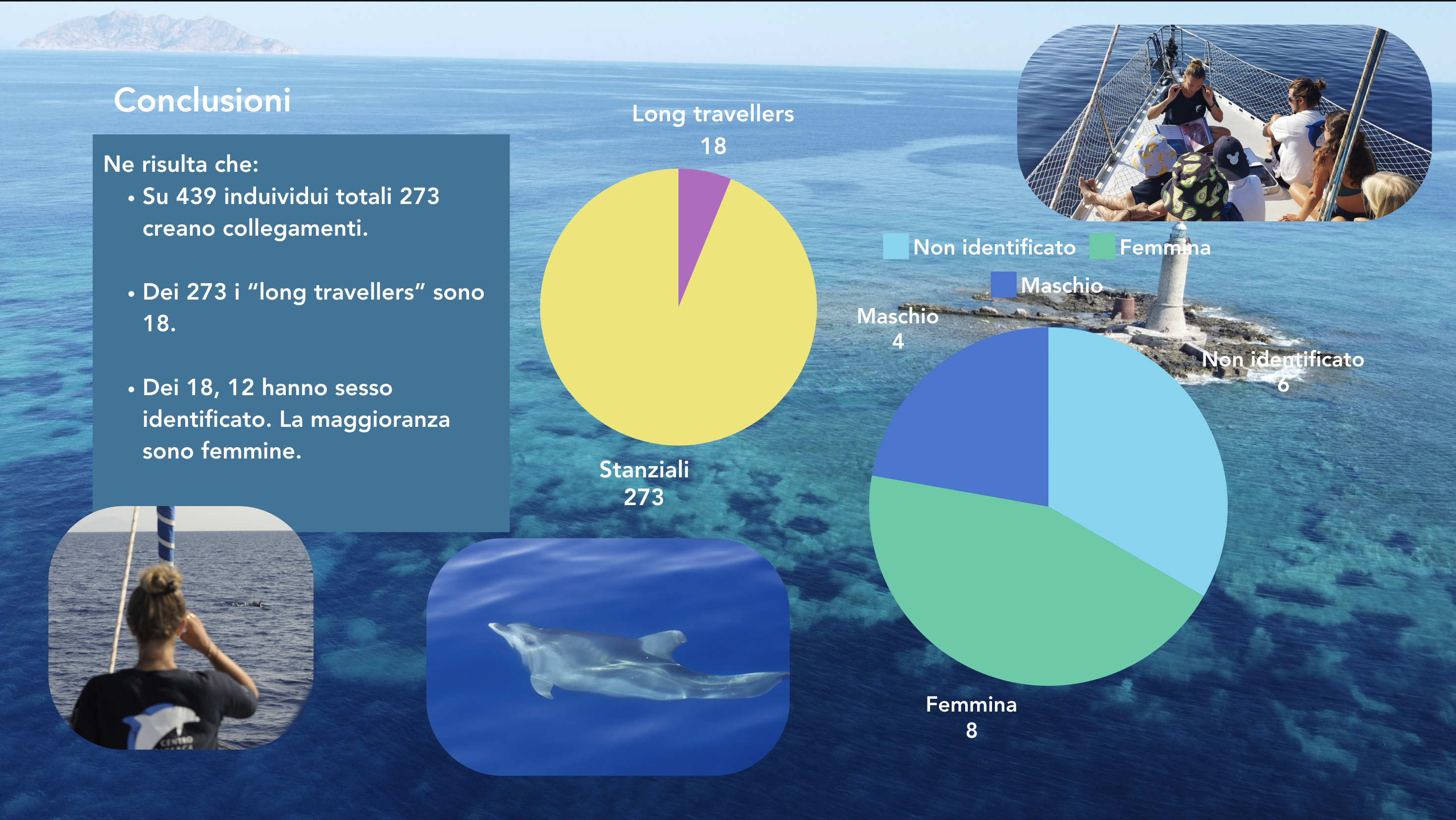This paper focuses on the bottlenose dolphin (Tursiops truncatus) found in the waters of the
Pelagos Sanctuary, which is a protected area of the Mediterranean Sea established in 2002. The
specific area investigated was the Tuscan Archipelago lying on the northwestern coast of Italy,
which includes five specific sectors — Livorno, Bastia, Elba, Montecristo and Argentario —
identified by the Italian Navy. Bottlenose dolphins are very social and form populations with
'fission-fusion' dynamics. Although they tend to be sedentary and territorial, some individuals,
known as 'long travellers', will move long distances and interact with members of other groups,
thus adding diversity to their gene pools.
The aim of this research is to observe and analyse the movement of individual dolphins in their five
existing groups, each group takes its name from the sector of its territory, to understand the
connectivity both within and between each group.
Data collection was carried out on board a catamaran and a sailboat, with observers stationed along
the port, starboard and bow of the vessels to optimise the probability of sightings. The tools used
were: binoculars for sightings; stopwatches to time breathing intervals; reflex cameras for photoidentification;
a hydrophone to detect underwater vocalisations; various devices to measure
environmental parameters (temperature, salinity, depth, etc.); GoPro cameras to record their
general behaviour. During each sighting, photographs were taken of the fins of each individual to
identify their natural distinguishing marks, such as scratches and bites. Each individual was
registered with a unique code and the photographs were uploaded to the database of the Centre
for Cetacean Research (CRC).
While the author of this paper only participated in the research process during their internship in
August 2023, a decision was made to include in this study all the data collected over the entire
twenty years of the project (May 2003 to September 2024). These data include the results of 1,787
surveys, during which a total of 1,155 sightings were made of various cetacean species. Specifically,
439 bottlenose dolphins were registered in the database, 28 of these were observed in the Ligurian
Sea and 401 in the Northern Tyrrhenian Sea, all of these sightings were examined in this study.
Data was analysed using the Flourish platform to create a 'Network Graph' and trace the
connections between individual dolphins. However, that illustration generated a map that was not
clear enough to extrapolate usable results. Therefore, the NodeXL programme was used to
organise individuals by sector and present the data in a readable graph.
The results revealed a network of connections between individuals within each of the five sectors
and confirmed that the bottlenose dolphin is a primarily sedentary species that does not travel far
from its territory. However, the study also identified the presence of several long travellers who
moved beyond their home range, intermingled with other groups and contributed to connectivity
between the different sectors. In general, 273 of the 439 individuals sighted created links both
within and between the five sectors. Eighteen of those dolphins were determined to be long
travellers and the sex of twelve of them — eight females and four males — was identified based on
behaviour patterns (females tend to travel in larger groups than the males) and visual observations
(genital apparatus can be seen when the mammals breech and flip above the water surface).
While the exact reasons why some bottlenose dolphins become long travellers is not known, some
of the causes may be ecological factors, food availability, environmental changes, noise pollution,
commercial fishing, etc. Whereas, the low number of long travellers in the Tuscan Archipelago could
be due to the distance between the five sectors, as bottlenose dolphins do not travel more than
about 50 km, or the presence of a deep oceanic trench between the islands of Elba and Corsica,
which creates distinct habitats where bottlenose dolphins prefer to congregate.
